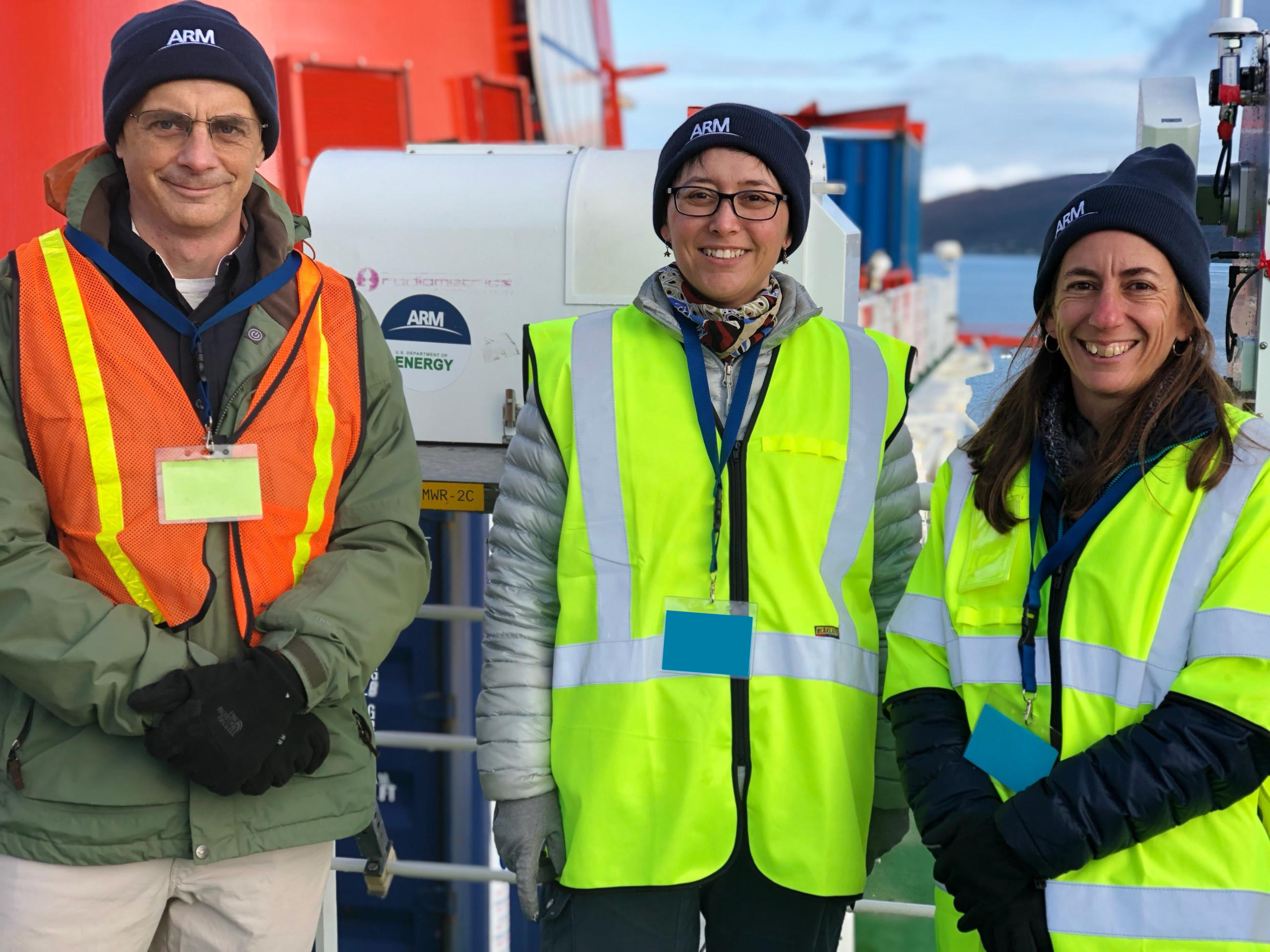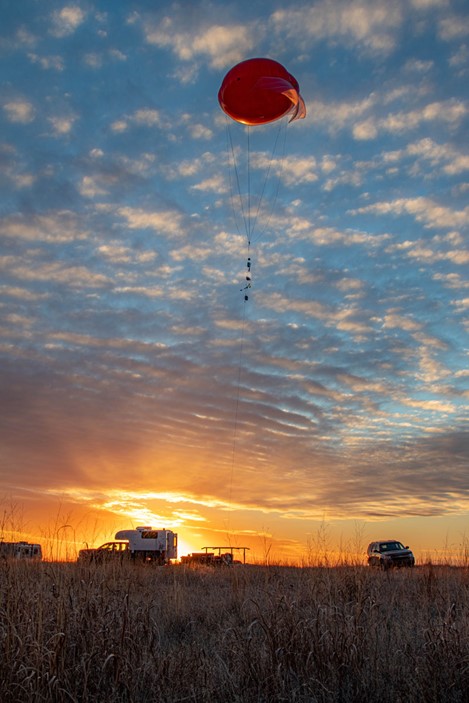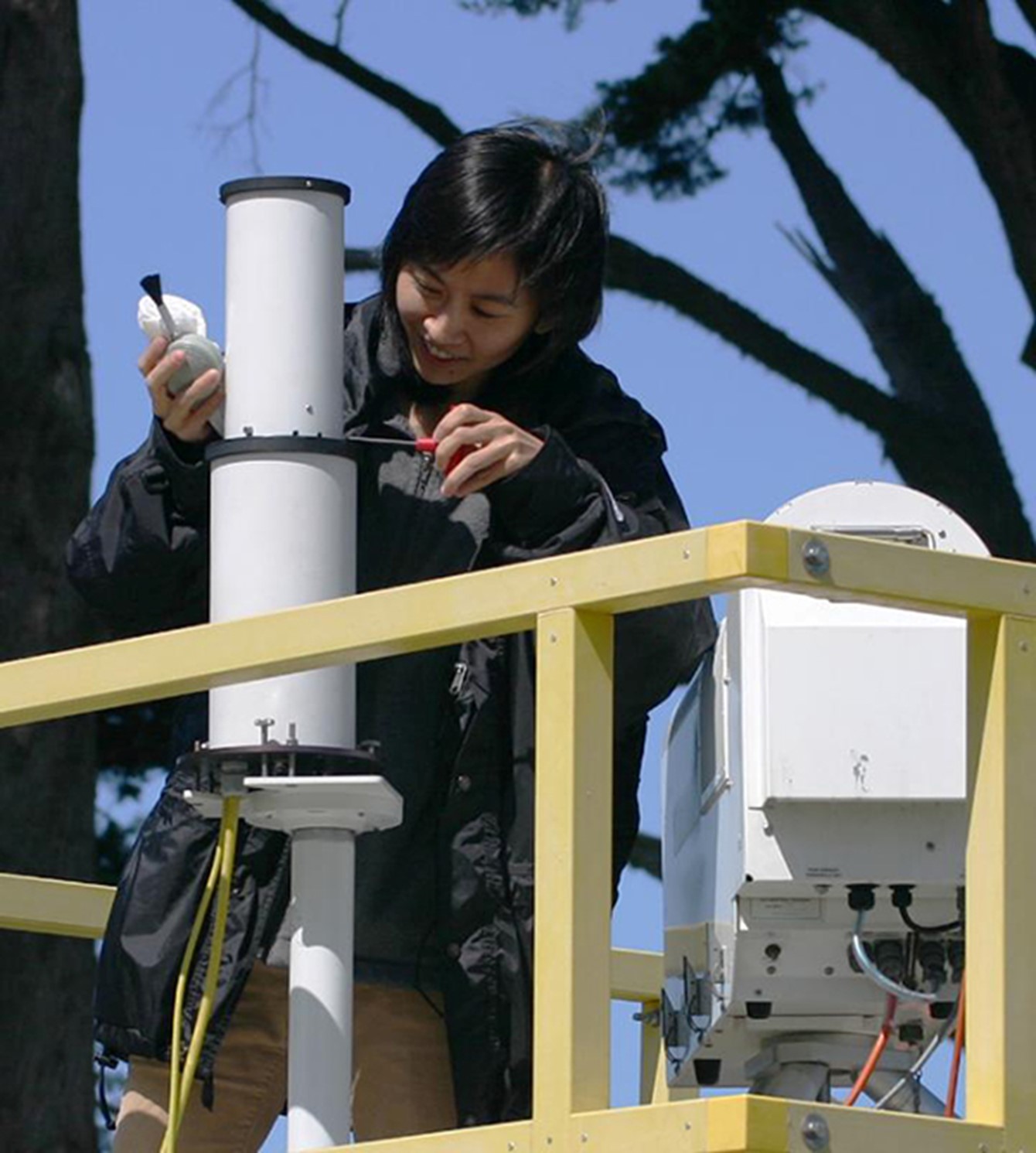Experts share advice for working with the Department of Energy
The Department of Energy’s (DOE) Earth and Environmental Systems Sciences Division (EESSD) funds a significant amount of the work through the Atmospheric System Research (ASR) program, the Atmospheric Radiation Measurement (ARM) user facility, and others.
In fact, EESSD supports work by scientists, universities, national laboratories, and research institutes in the areas of atmospheric science, earth and environmental systems modeling, data management, and environmental system science.
The 2021 American Geophysical Union (AGU) Fall Meeting included a series of town halls and sessions designed to help scientists funded by DOE or other agencies work more smoothly with DOE and conduct impactful research. A summary of some of those sessions is below.

Funding 101 for Early Career Scientists
ASR Program Manager Shaima Nasiri recorded a presentation about EESSD’s funding opportunity announcement (FOA) process.
ASR annually releases FOAs to solicit research grant applications that align with the program’s goal.
Nasiri’s presentation was part of a session aimed at early career scientists in atmospheric chemistry but is relevant for all early career scientists.
Her biggest piece of advice for early career scientists was to ask the program manager if you have questions about applying for funding opportunities, participating in review panels, interpreting proposal reviews, or submitting project reports.
“Don’t assume,” said Nasiri. “Don’t try to read between the lines. Don’t guess. Don’t go and ask your colleagues what they (program managers or reviewers) really mean.”
View Nasiri’s presentation here. (Registered AGU 2021 attendees can view session recordings and town halls until February 28, 2022, by logging in to the online meeting platform.)
Use ARM to Power Your Research
A December 7 town hall focused on collaboration with ARM and other DOE Office of Science user facilities.

“User facilities are characterized by providing unique resources that go beyond what your institution’s core facilities can provide,” said Sharlene Weatherwax, Associate Director of Science for DOE’s Biological and Environmental Research (BER) program. BER supports three user facilities: ARM, the Environmental Molecular Sciences Laboratory (EMSL), and the Joint Genome Institute (JGI).
User facility resources (e.g., data, instrumentation, laboratory space, staff support) are freely available to researchers who plan to share their work with the scientific community.
For almost 30 years, ARM has provided what Weatherwax called “the longest-running data record in the world for aerosol and cloud measurements.” (Users can access and order ARM data online through Data Discovery.) Researchers also can propose to use ARM facilities for field campaigns.
Christine Chiu, an associate professor at Colorado State University, is the principal investigator for the ASR project Constraining Microphysical Processes of Warm Rain Formation Using Advanced Spectral Separations, an Ensemble Retrieval Framework and Machine Learning Techniques. During the town hall, Chiu spoke about her nearly 20 years of using ARM data.
She downloaded her first ARM data in 2003 while working at the NASA Goddard Space Flight Center. Her research often involves remote sensing, radiative transfer, and cloud-aerosol-precipitation-radiation interactions.
Among her recent work, Chiu used data from the 2017–2018 Aerosol and Cloud Experiments in the Eastern North Atlantic (ACE-ENA) field campaign to train machine learning models to predict the speed and characteristics of precipitation particles.
“From doing that, we are able to get new insights about drizzle formation, which hasn’t been discovered in the past 50 years, so I’m quite excited about that,” said Chiu, an ACE-ENA co-investigator.
Tap Into ARM Resources
Chiu also participated in ARM campaigns in California, Germany, Finland, the eastern Pacific, and the South Atlantic. Looking back on those campaigns, Chiu called it “a privilege to work with a lot of world-leading experts in their field.”
Chiu noted the support that researchers receive from ARM instrument experts and data product teams, which are led by ARM translators.
Another important resource is ARM’s User Executive Committee, which represents the user community in interactions with ARM management. Chiu served on the committee from 2017 through 2020.

For potential ARM users or campaign principal investigators, Chiu suggested contacting ARM leadership. “ARM really has a clear, specific, and shared goal to address and make significant progress on big science questions, so if you have a brilliant idea, I don’t think you will be overlooked.”
Until April 5, 2022, researchers worldwide may submit preliminary proposals to use ARM components for field campaigns. Learn more about the open call.
Collaborate With Multiple User Facilities
In mid-December 2021, ARM and EMSL announced that they were seeking collaborative research applications as part of the Facilities Integrating Collaborations for User Sciences (FICUS) program. It is the second year in a row that ARM and EMSL have joined on a FICUS call. Researchers can use EMSL capabilities to analyze aerosol particles collected on ARM tethered balloon system (TBS) flights.
During a December 9 town hall, attendees learned about the FICUS program and projects that combined the expertise and capabilities of multiple user facilities.
Town hall presenter Swarup China, an EMSL chemist, helped develop a lightweight aerosol sampler—the automated Size- and Time-Resolved Aerosol Collector (STAC)—for use on the ARM TBS. Analysis of STAC samples from past ARM TBS flights has provided new details about the composition of aerosols collected at different altitudes.
In 2022, ARM plans to deploy the STAC for TBS flights in Oklahoma, Colorado, and Texas. The STAC is a part of the current ARM/EMSL call. Researchers can submit letters of intent for the FICUS call until February 10, 2022. Get more details about the call.
Write a Proposal That Shines
Alison Hatt, deputy of user services at EMSL, shared the following tips for writing a successful EMSL user proposal:
- Read call-specific guidance and requirements. “While all of us at these facilities try to make our guidance as clear as possible, there’s always going to be a lot of it, and failing to provide the required information or follow all the steps is going to hurt your prospects of getting approved.”
- Respond to the call focus topics or highlighted capabilities and write to the review criteria. Make use of educational resources from the facilities. This page on the ARM website explains ways to use ARM facilities and data. ARM also gathered advice from past and current principal investigators on how to polish preliminary proposals.
- Ensure that the proposal aligns with the BER mission. Other useful documents to consult are grand research challenge reports, program plans, and workshop reports.
- Provide a clear objective, hypothesis, project plan (including analysis and plans for the data), and need for the facility.
- Contact facility staff for support when preparing a proposal, but do not wait until the last minute to ask them questions.
- Build a strong team with the expertise and track record to help execute what is being proposed.
- Be persistent. “Read the reviewer comments if you get rejected, talk to staff some more and strengthen your proposal, and then try again.”
Get more information on the ARM campaign process and submitting a proposal.
Other DOE/BER Opportunities
“User facilities are characterized by providing unique resources that go beyond what your institution’s core facilities can provide.”
– Sharlene Weatherwax, Associate Director of Science for DOE BER
A December 9 town hall outlined DOE/BER research and funding opportunities that often connect to ASR and ARM.
The Office of Workforce Development for Teachers and Scientists (WDTS), within the DOE Office of Science, issues regular research and training program calls for college students and faculty. Selected participants work on projects that support the DOE mission. The list of programs is available on the WDTS website.
For scientists seeking research grants, BER regularly publishes relevant FOAs online. FOAs primarily target university researchers. DOE national laboratory researchers often receive support through scientific focus areas (SFAs), which address BER goals and challenges. (ASR currently supports two SFA projects.) In addition, DOE’s Early Career Research Program awards five-year grants to early career scientists at universities and DOE national labs.
The Small Business Innovation Research (SBIR) and Small Business Technology Transfer (STTR) programs support the development of early-stage technologies with potential for going to market.
Grants for early-stage research across DOE science and technology program areas are available for researchers from designated states and territories from DOE’s Established Program to Stimulate Competitive Research (EPSCoR).
Scientists do not need DOE/BER funding to access a user facility or its data.
# # #Author: Katie Dorsey, Staff Writer, Pacific Northwest National Laboratory
This work was supported by the U.S. Department of Energy’s Office of Science, through the Biological and Environmental Research program as part of the Atmospheric System Research program.

